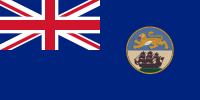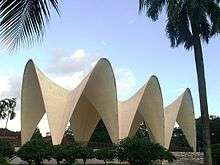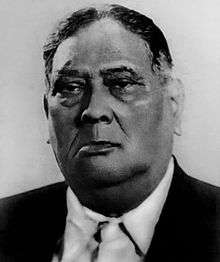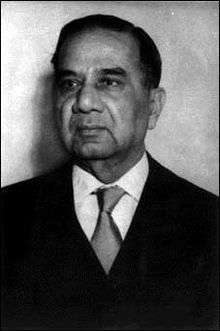Prime Minister of Bengal
The Prime Minister of Bengal was the head of government of Bengal Province and the Leader of the House in the Bengal Legislative Assembly in British India. The position was dissolved upon the Partition of Bengal in 1947.
| Prime Minister of Bengal
বাংলার প্রধানমন্ত্রী | |
|---|---|
 Badge of Bengal | |
 | |
| Style | The Honorable |
| Appointer | Governor of Bengal |
| Formation | 1 April 1937 |
| First holder | A. K. Fazlul Huq |
| Final holder | H. S. Suhrawardy |
| Abolished | 14 August 1947 |
History
The office was created under the Government of India Act 1935, which granted Bengal a bicameral legislature, including the Bengal Legislative Council and the Bengal Legislative Assembly. The Prime Minister was in charge of the executive branch.[1] The Prime Minister of Bengal played an important role in pan-Indian politics, including proclaiming the Lahore Resolution and dealing with Japanese attacks during World War II.
The Congress party boycotted the office due to its anti-British policy. The office was held by three Muslims. The first premier was A. K. Fazlul Huq, the leader of the anti-feudalist Krishak Praja Party. Huq formed his first government with the All India Muslim League in 1937. The League withdrew support in 1941, after which Huq forged a coalition with the Hindu Mahasabha led by Syama Prasad Mukherjee. The Huq-Syama coalition lasted till 1943. Huq was succeeded by a Muslim League ministry led by Sir Khawaja Nazimuddin. A conservative figure, the Nazimuddin ministry lasted till 1945,[2][3] when governor's rule was imposed. The next election saw H. S. Suhrawardy lead the Muslim League to a majority. Suhrawardy sought an undivided Bengal with support from Hindu leaders and the British governor; but faced challenges like the Noakhali riots, Direct Action Day and the idea was also rejected by the All India Congress party who called for partitioning of Bengal.
Office holders
.jpg)

| No | Name | Image | Term(s)[4] | Party | Governor | Viceroy |
|---|---|---|---|---|---|---|
| 1 | Sher-e-Bangla A. K. Fazlul Huq |  | 1 April 1937 - 1 December 1941 12 December 1941 - 29 March 1943 | Krishak Praja Party | Sir John Arthur Herbert | The Marquess of Linlithgow |
| 2 | Sir Khawaja Nazimuddin | 29 April 1943 - 31 March 1945 | Bengal Provincial Muslim League | Sir John Arthur Herbert (-1944) Sir Richard Casey (1944-) | The Marquess of Linlithgow The Viscount Wavell | |
| 3 | H. S. Suhrawardy |  | 23 April 1946 - 14 August 1947 | Bengal Provincial Muslim League | Sir Richard Casey (-1946) Sir Frederick Burrows | The Viscount Wavell Earl Mountbatten |
Legacy
When Bengal was partitioned, the office was succeeded by the Chief Minister of West Bengal and the Chief Minister of East Bengal.
All three Bengali premiers moved to East Bengal, where they continued to be influential statesmen. Nazimuddin and Suhrawardy became Prime Ministers of Pakistan, while Huq served as East Bengal's chief minister, and later as East Pakistan's governor. The three premiers are considered the forerunners of politics in modern Bangladesh.
References
- Sen, Saibal (15 August 2013). "Post-Independence, a Prime Minister for Bengal!". Times of India.
- Ayesha Jalal (1994). The Sole Spokesman: Jinnah, the Muslim League and the Demand for Pakistan. Cambridge University Press. p. 152. ISBN 978-0-521-45850-4.
The [Nazimuddin] ministry was unpopular ... No one was particularly sorry to see the League ministry fall.
- Alamgir, Mohammad (2012). "Nazimuddin, Khwaja". In Islam, Sirajul; Jamal, Ahmed A. (eds.). Banglapedia: National Encyclopedia of Bangladesh (Second ed.). Asiatic Society of Bangladesh.
On 1 December 1941 he resigned from the cabinet because of dissension between Huq and Jinnah. During the Shyama-Huq coalition (1942 to 1943) he acted as the Leader of the Opposition.
- "Premier of Bengal". West Bengal Legislative Assembly. Archived from the original on 14 July 2014.